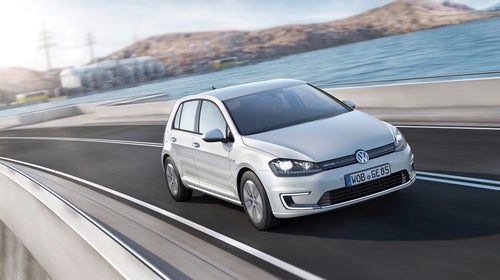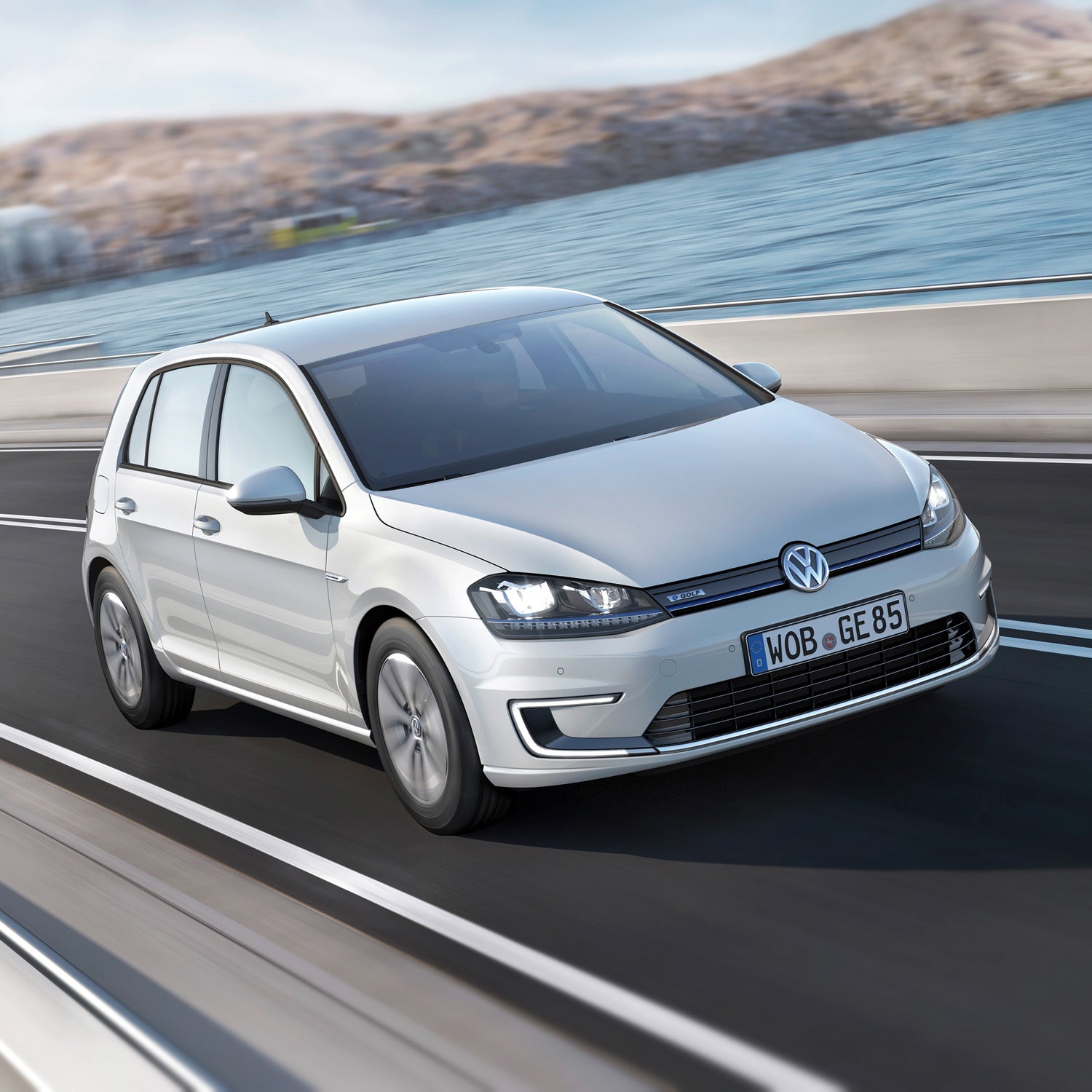The Sell: The “people’s” carmaker goes EV for a lot less money than BMW and Mercedes.
The Test: When Volkswagen ($35,445; 126 city, 105 hwy, MPGe), it kept everything but the power source as Golf-like as possible (heated seats, ultra-precise drivetrain).
The e-Golf’s handling was predictable, poised, and stable while practicing a few maneuvers on Virginia highways and dirt roads. It’s also sportier than the . VW even gave the e-Golf all-season, rather than range-extending, tires. We’ve found that all-season rubber maintains wet- and cold-weather traction, while low-rolling-resistance tires give up grip as soon as temperatures dip below 40 degrees.
Its 83-mile range is on par with the competition, but the e-Golf also comes standard with goodies like fast-charging navigation and LED headlights. Metrics should also include utility, and there the e-Golf pulls past its rivals. The 22.8 cubic feet of cargo space easily bests the Mercedes B-Class, the Honda Fit, and the high-riding Porsche Macan.
Flip down the e-Golf’s second-row seats, and the e-Golf matches the Fit and the Porsche for bike-ski-backpack-swallowing utility. It beats the cargo capacity of the Leaf by 75 percent. (Granted, the Leaf, with a starting price of $29,010, costs about $6,000 less than the e-Golf.)
What’s Missing? A lower price. VW’s Golf TDI sells for $21,995 and gets an impressive 45 mpg on the highway. Even with federal and state tax credits on the e-Golf, it’d take years to break even on that cost discrepancy.
The Verdict: A Golf in every single way, save the means of propulsion.


